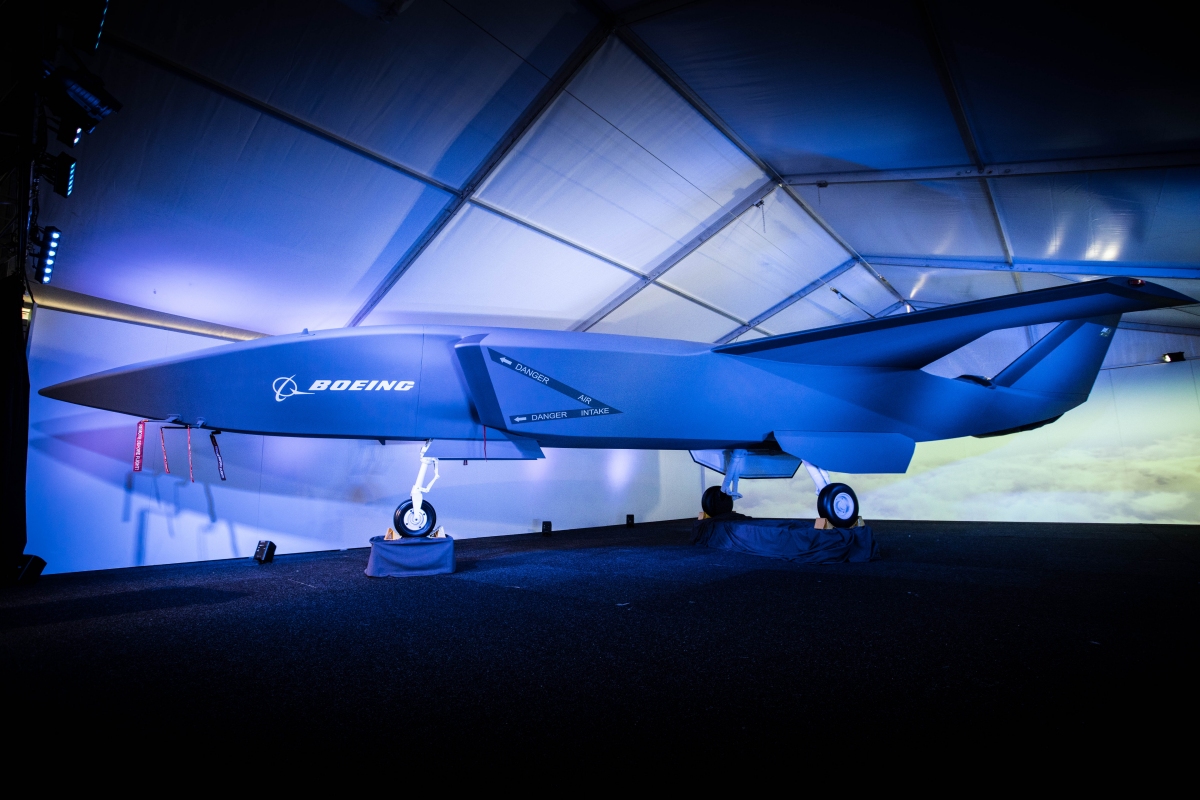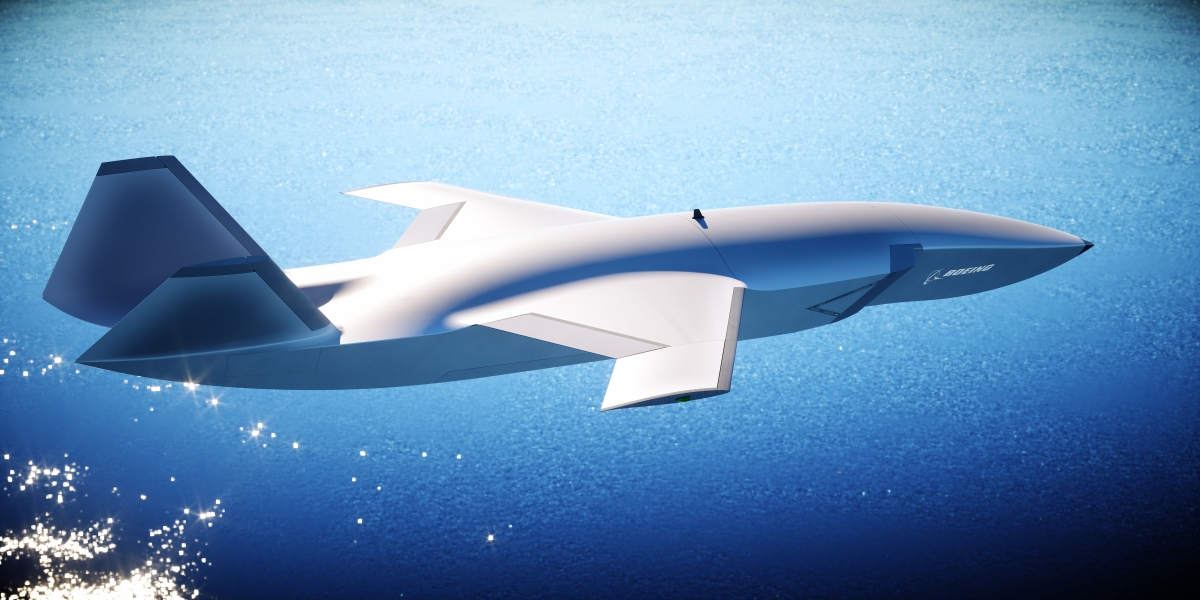Through the looking glass: The Boeing Airpower Teaming System provides an early glimpse at the future of warfare in which opposing sides battle it out remotely. Weapons like this are also cheaper and safer to operate, allowing forces to maximize their resources.

Boeing on Wednesday revealed its latest aerial platform, the Boeing Airpower Teaming System. The jet-like aircraft was designed to fly solo, unmanned missions or alongside existing military aircraft in a support role at a fraction of the cost associated with traditional fighter jets.
The Boeing Airpower Teaming System measures 38 feet long with a range of more than 2,000 nautical miles. Boeing said the craft can be loaded with onboard sensors to support intelligence, surveillance and reconnaissance missions and electronic warfare.

Kristin Robertson, vice president and general manager of Boeing Autonomous Systems, said the company’s latest will “truly be a force multiplier as it protects and projects air power.”
Developed by Boeing Australia, the project is the company’s largest investment in a new unmanned aircraft program outside the US.
Unmanned aircraft afford a number of advantages over human-piloted fighter jets. Humans, for example, can only be exposed to a limited number of Gs, fly for a set number of hours and process data so quickly. Autonomous aircraft wouldn’t be limited by such factors.
Boeing said the first test flight is planned for 2020.
https://www.techspot.com/news/78950-boeing-unmanned-fighter-jet-future-air-combat.html
